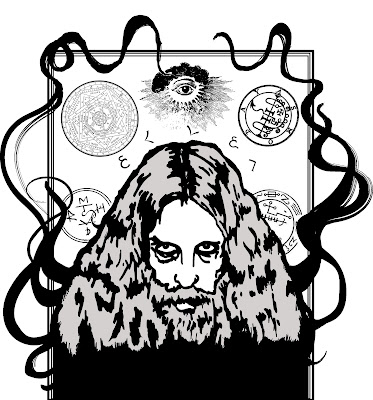As soon as they announced the theme I immediately knew who I wanted to interview. I wanted to talk with Alan Moore. I tried to get such a crazy idea out of my head, I mean...Alan Moore? Me? How could that happen?? Suffice it to say, I couldn't get the idea out of my head. I had a great spin on the interview, I'm a tremendous fan of Moore's work, and here was the perfect reason to try and contact him. So I set to work. Moore doesn't have an agent, he doesn't have any official representation, so I just sent out an email to pretty much every publisher he'd ever worked with. Blanketed the field, and heard nothing back.
Until. Until some nice folks at Avatar emailed me and told me that they'd forwarded my request to Top Shelf comics, which is his main publisher here in the US. Not long after, Chris Staros over at Top Shelf emailed me back to let me know that he'd contacted Alan with my request, and that I should be hearing something soon. Let me pause for a moment here to say how awesome Chris Staros is, because he is. In all of my communications with him he's been nothing but friendly, and professional. A true gentleman. Eventually I was contacted by Mr. Moore's assistant editor at his magazine Dodgem Logic, Joe Brown, and Mr. Brown said that Alan would love to speak with me. He gave me a time and a date. I threw up. Well, almost, because I had about a week to prep.
Background: One of the first comics I can remember reading (and understanding) was Swamp Thing #40, which was about this woman who was a werewolf. The central idea was that werewolves and women both cycle with the moon, and it was horrifying, and sad, and human, and amazing. And written by Alan Moore. Alan Moore is pretty much responsible for my comic book obsession.
So, I had a week to prep to talk to one of the most influential figures in my life.
Here is the result. Write Club and Slice Magazine presents Alan Moore:







 Point yer podcatcher here!
Point yer podcatcher here!